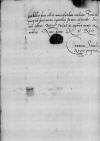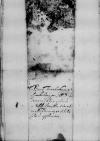Reverendissimo in Christo Patri, domino ⌊Ioanni episcopo Varmiensi⌋ et Magnifico ⌊Stanislao Kostka⌋ palatino ⌊Pomeraniae⌋, terrarum nostarum ⌊Prussiae⌋ thesaurario, sincere nobis dilectis gratiam nostram.
Reverendissime et Magnifice, sincere nobis dilecti.
Postquam sacra ⌊regia maiestas⌋, dominus et parens noster colendissimus, pro suo in nos paterno amore potestatem nobis facere dignatus est omnia bona mensae suae et nostrae in ⌊Prussia⌋ obligata redimendi commodisque nostris applicandi, nos pro eo desiderio, quo tenemur, ut auspiciis nostris bonae litterae incrementum accipiant in diesque magis augeantur, permisimus, ut duae villae Frankenhain seu Gruta et Starkenberk cum molendino de manibus generosi Stanislai Varschimowski et eius uxoris possessorum seu tenutariorum ⌊Rogoznensium⌋ in ⌊Prussia⌋ per reverendum dominum ⌊Tidemannum episcopum Culmensem⌋ redimantur et commodis seu usibus scholae litterariae Culmensis applicentur. Itaque committimus
Strenuitatibus or Sinceritatibus⌈StrenuitatibusStrenuitatibus or Sinceritatibus⌉ Vestris volentes, ut vocatis ad vestri praesentiam generosis Stanislao Varschimowski et eius uxore iura, privilegia, obligationes, quas se ad ipsas duas villas et molendinum habere praetendunt, coram vobis reponi et summam pecuniae iuste et legitime inscriptam a reverendo domino ⌊episcopo Culmensi⌋ recipere faciatis, in cuius quidem domini episcopi possessionem et administrationem praedictas duas villas cum molendino tradatis, facientes, quicquid decreveritis, a partibus firmiter observari, secus non facturi.
Datae ⌊Vilnae⌋, die septima mensis Novembris anno Domini M-o D-o XLVI-o millesimo quingentesimo quadragesimo sexto.
Commissio sacrae maiestatis regiae propria



 AGAD, AZ, 300, f.10r
AGAD, AZ, 300, f.10r